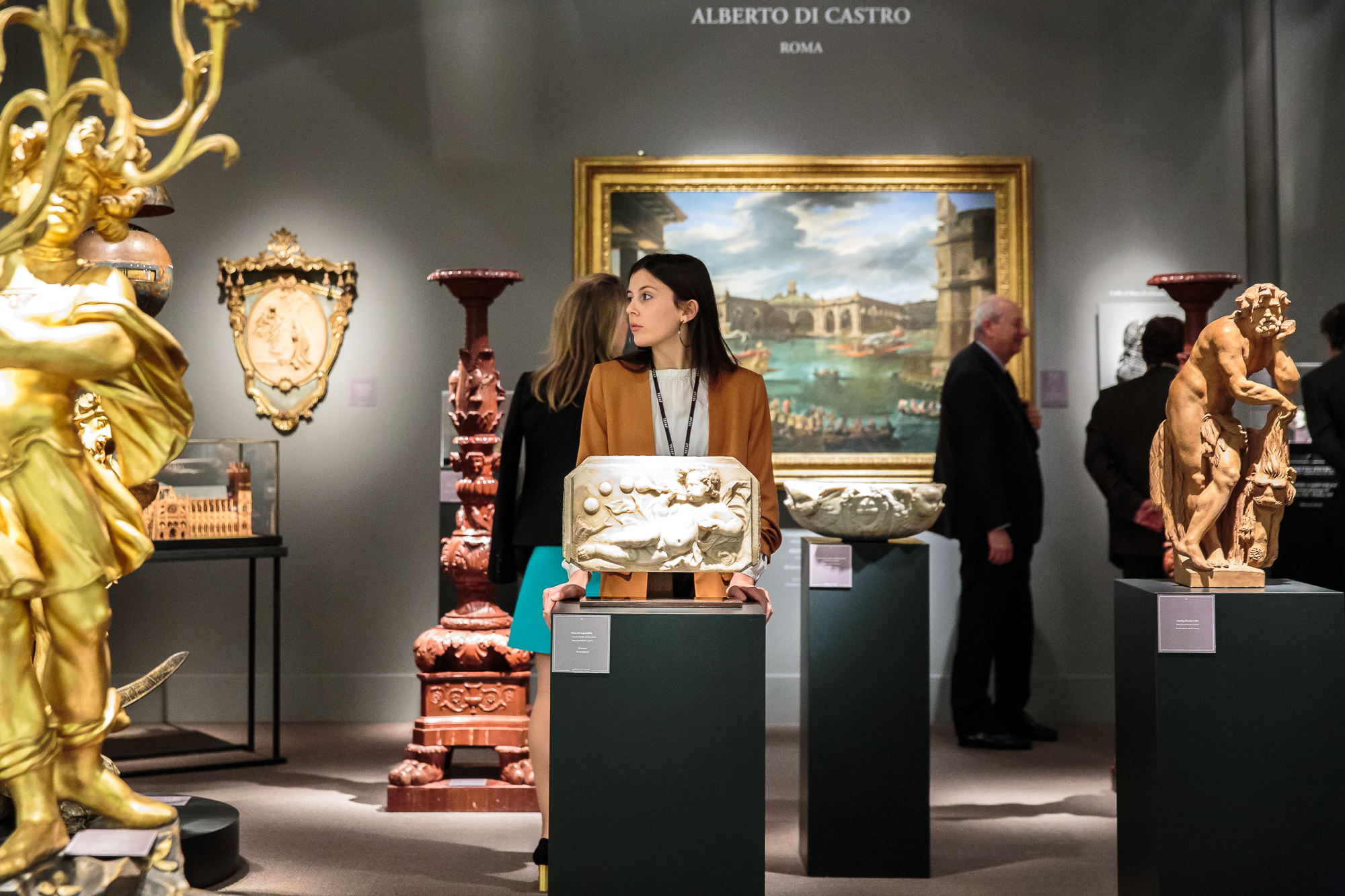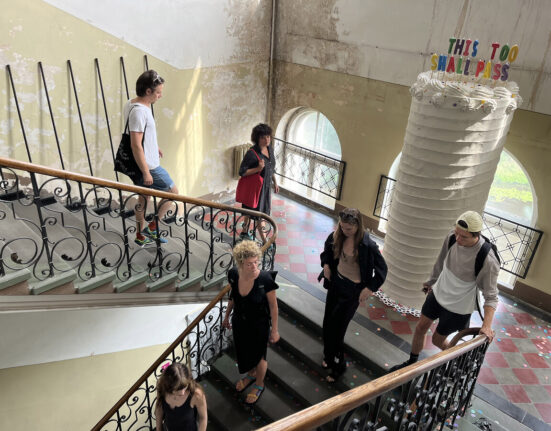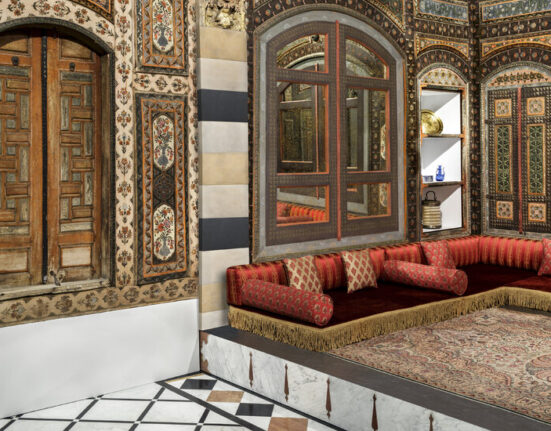There’s change afoot in the Old Master market. At the European Fine Art Fair (TEFAF) in Maastricht, which opened to the public on Saturday, March 10, a growing number of participating dealers are (gasp!) under 40 years old. These young guns have a different way of doing business from their predecessors—and ambitious plans to reinvigorate the market, which has in recent years been overshadowed by the glitz and astronomical prices of contemporary art.
“Us old ones are wise enough to pass the baton to the younger generation,” Konrad Bernheimer, the former chairman of legendary Old Master dealership Colnaghi, told artnet News. At the fair on Friday afternoon, he exited the gallery’s dramatically lit booth and good-naturedly clasped the shoulders of his successor, 39-year-old Jorge Coll. In 2015, Bernheimer merged the 255-year-old gallery with the young dealership Coll & Cortés, founded by Coll and his partner Nicolas Cortés. The pair now fully own Colnaghi.
The gallery was doing brisk business at the Dutch fair: By the end of the first public day, it had sold a total of eight works, including Luis de Morales’s 16th-century panel Christ the Man of Sorrows, priced in the region of €1.2 million ($1.5 million), to an American institution. It also sold Bartolomé Esteban Murillo’s mournful 17th-century portrait, La Dolorosa, priced in the seven figures, to a European private collector under the age of 40.
Bartolomé Esteban Murillo’s La Dolorosa, which sold for a seven-figure sum at Colnaghi.
Similarly, the Turin- and London-based gallery Benappi Fine Art has been around for four generations but is now led by 30-year-old Filippo Benappi and four others who are under 35, according to the gallery’s Harry Gready.
A New Approach
Elder statesmen of the Old Master sector like Bernheimer have often developed deep (and deeply profitable) relationships with a small number of clients. But they rarely go out and proactively search for new ones.
“If you can break even with your two 85-year-old clients and two to five 55-year-olds, then you don’t look at who else could become your clients,” said TEFAF’s chairman Nanne Dekking, who has been pushing the organization to modernize and appeal to new audiences since he took the helm last year.
Like Dekking, Coll and his peers are Old Master evangelists. They are savvy about branding and self-promotion, open to doing business online, and aware that they must make an effort to convert new devotees.
Konrad Bernheimer (far left) at Colnaghi’s stand at TEFAF Maastricht. Photo by Natascha Libbert.
Take, for example, Lullo & Pampoulides, an Old Master gallery established in 2016. Its founders, Andrea Lullo and Andreas Pampoulides, take care to use approachable language on their wall labels, not overstuff their art-fair booths, and mix in photography and 20th-century work to lure a younger audience.
“There was an assumption 30 years ago that collectors understood icons, symbols, casting techniques—we want to make that information more accessible,” Andreas Pampoulides told artnet News.
Participating in TEFAF’s main Old Master paintings section for the first time this year, the gallery sold works including Portrait of a Man Wearing a Turban (circa 1650) by an anonymous painter active in Rome priced at €250,000 ($307,400). More buyers, particularly young ones, “will come as the brand grows—and it is a brand,” Pampoulides affirmed of his upstart operation.
Andreas Pampoulides (left) and Andrea Lullo. Photo courtesy of LULLO • PAMPOULIDES Fine Art.
A Business in Transition
Not every young Old Master dealer shares these priorities, however. Jonny Yarker, a scholar of British art who began working with veteran gallerist Lowell Libson in 2012, has a more traditional attitude. “We’re excited when people show enthusiasm, but you’ve got to do the conversion yourself,” Yarker told arntet News. “I’m not sure I can do it for you.”
Meanwhile, dealers who have inherited their parents’ Old Master businesses aren’t always interested in carrying on the same tradition. Since Ambrose Naumann took the reins of his father Otto Naumann’s renowned gallery last year, he has shifted its focus to overlooked artists of the 19th and 20th centuries.
“I like the margins more,” the younger Naumann told artnet News. “There are fewer dead ends, it’s more likely works will be signed, and attribution isn’t always an issue—or the egos involved in attribution.” The lower price points, he added, are more accessible to younger audiences.
At TEFAF, Naumann sold a small painting by the largely forgotten French painter Marcel Delmotte (1901–84) priced at $10,000.
A New Kind of Outreach
Naumann’s ambivalence toward the Old Master market is not entirely surprising. By some accounts, the sector’s growth has stalled.
According to the most recent Art Basel and UBS art market report, auction sales for European Old Masters increased six percent in 2016, to $594 million. But that figure is still significantly down from the category’s 2007 high of $906 million. And while London’s marquee Old Master evening sales in December were up more than 50 percent on the prior year, January’s combined sales in New York totaled $50.2 million, compared with $93.8 million in 2016, according to the artnet Analytics.
One of TEFAF Maastricht’s youngest fans. Photo by Loraine Bodewes.
Yes, the most expensive artwork ever sold—Leonardo da Vinci’s Salvator Mundi, which fetched $450.3 million last year—was an Old Master work. But it was included in Christie’s contemporary art sale and subject to a very 21st-century marketing campaign. Meanwhile, only a small handful of the Old Master dealers surveyed by artnet News reported multiple six- or seven-figure sales during TEFAF’s two VIP days last week.
Perhaps taking a cue from Christie’s, then, younger dealers are getting creative to expand their businesses. Toward the end of last year, London’s Kallos Gallery set up a one-day display of an ancient torso, Greek coins, and other petite treasures at the London offices of Google and YouTube to introduce young professionals to the world of ancient art. “It’s really hard sometimes to get people to come to the gallery, so we’ll come to you,” Kallos Gallery’s Hayley McCole explained to artnet News.
Although no direct sales have materialized as a result of the outreach efforts thus far, McCole said that some new contacts have come to openings, or referred friends.
Kallos Gallery in TEFAF’s Showcase section. Photo courtesy of Kallos Gallery/Jaron James.
“Not a lot of people know you can buy these things, and that a lot of them are affordable,” she noted. Indeed, Kallos may have had some of the most inexpensive art at TEFAF; sales included a first-century coin priced at €1,800 ($2,200) and a Byzantine gold and garnet ring from 6th to 8th centuries listed at €14,000 ($17,200).
Education First
Kallos isn’t the only one looking to convert a new generation to the wonders of older art. For the past two years, Colnaghi has organized a dinner during London’s Old Master sales during which young collectors compete to correctly guess the price of works up for auction, “The Price Is Right”-style.
In October, Colnaghi launched an eponymous foundation to promote Old Masters and antiquities to a younger audience. The nonprofit is developing online and in-person master classes in collecting in partnership with the Wallace Collection in London. (Coll said the first in-person course has already received 60 applications for 15 available slots.) The foundation is also preparing to organize trips to Seville, Spain, to mark the 400th anniversary of Murillo’s birth later this year.
“For us, it’s about community—we want to create experiences,” Coll told artnet News. “We want to create art lovers; art lovers will become collectors.”
Nicolas Cortés (seated) and Jorge Coll of Colnaghi. Photo courtesy of Colnaghi.
Similarly, TEFAF is in conversation with institutions including Maastricht University, New York University, and Columbia University about developing a year-round educational initiative in the Netherlands and the United States. (Philippe de Montebello, the former director of the Metropolitan Museum of Art and a staunch advocate for the lost art of connoisseurship, is advising TEFAF on the American component.)
The initiative “is meant to attract younger people who will come to the fair,” Nanne Dekking told artnet News. “If you look at museums and what they do to attract new audiences, or at Sotheby’s and Christie’s, they are ahead.”
Richard Green’s stand at TEFAF Maastricht. Photo by Loraine Bodewes.
Dekking, who has been particularly inspired by the Brooklyn Museum’s efforts to diversify its audience and board, notes that TEFAF will fall behind if it fails to attract an increasingly heterogeneous population. “Every other market looks to find new clients,” Dekking said during a panel in Maastricht on Friday. “We only look at people who already buy art. We should look at the people who don’t buy.”
TEFAF Maastricht is open through March 18 at the Maastricht Exhibition and Congress Center.
Follow Artnet News on Facebook:
Want to stay ahead of the art world? Subscribe to our newsletter to get the breaking news, eye-opening interviews, and incisive critical takes that drive the conversation forward.







